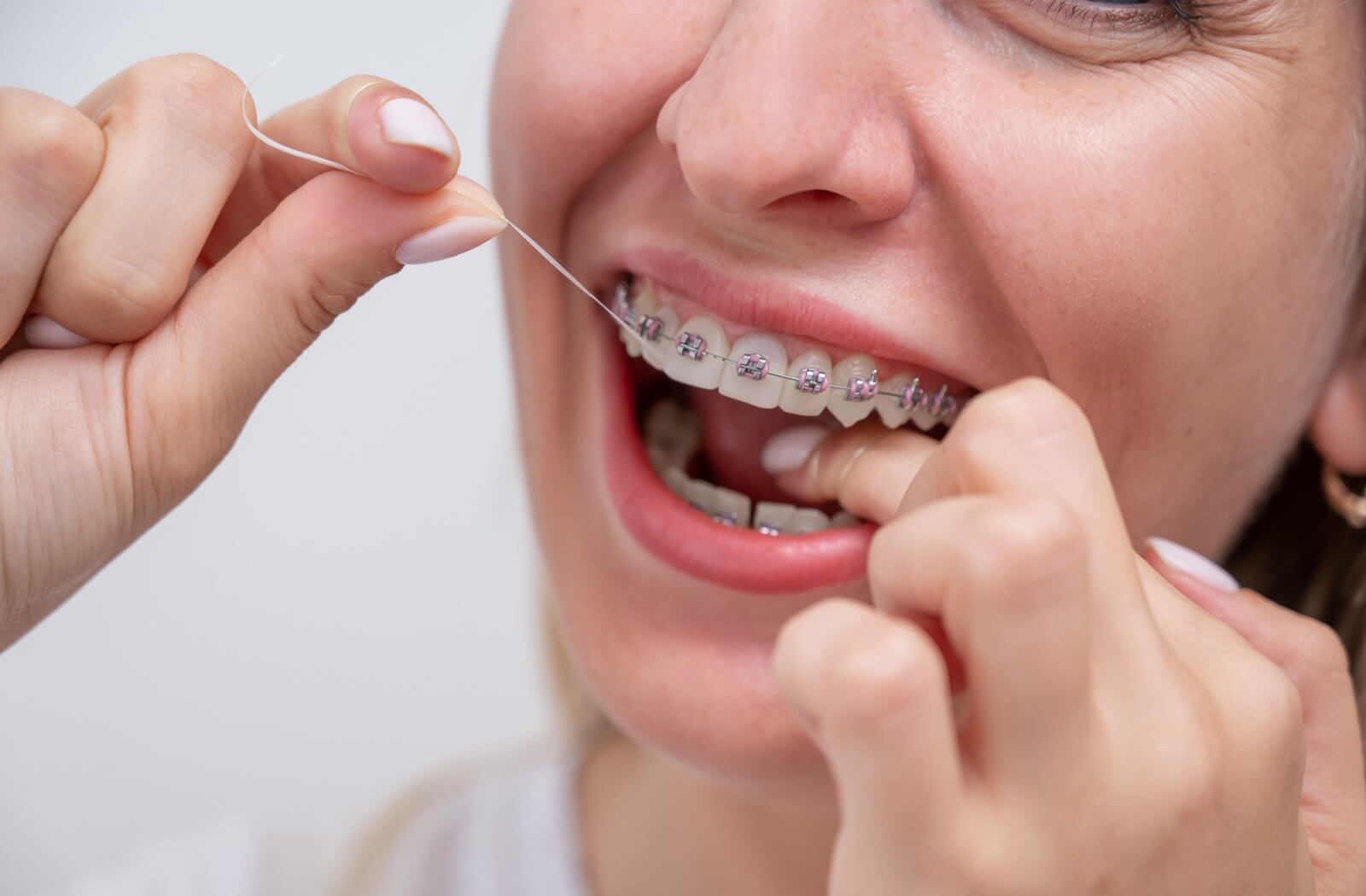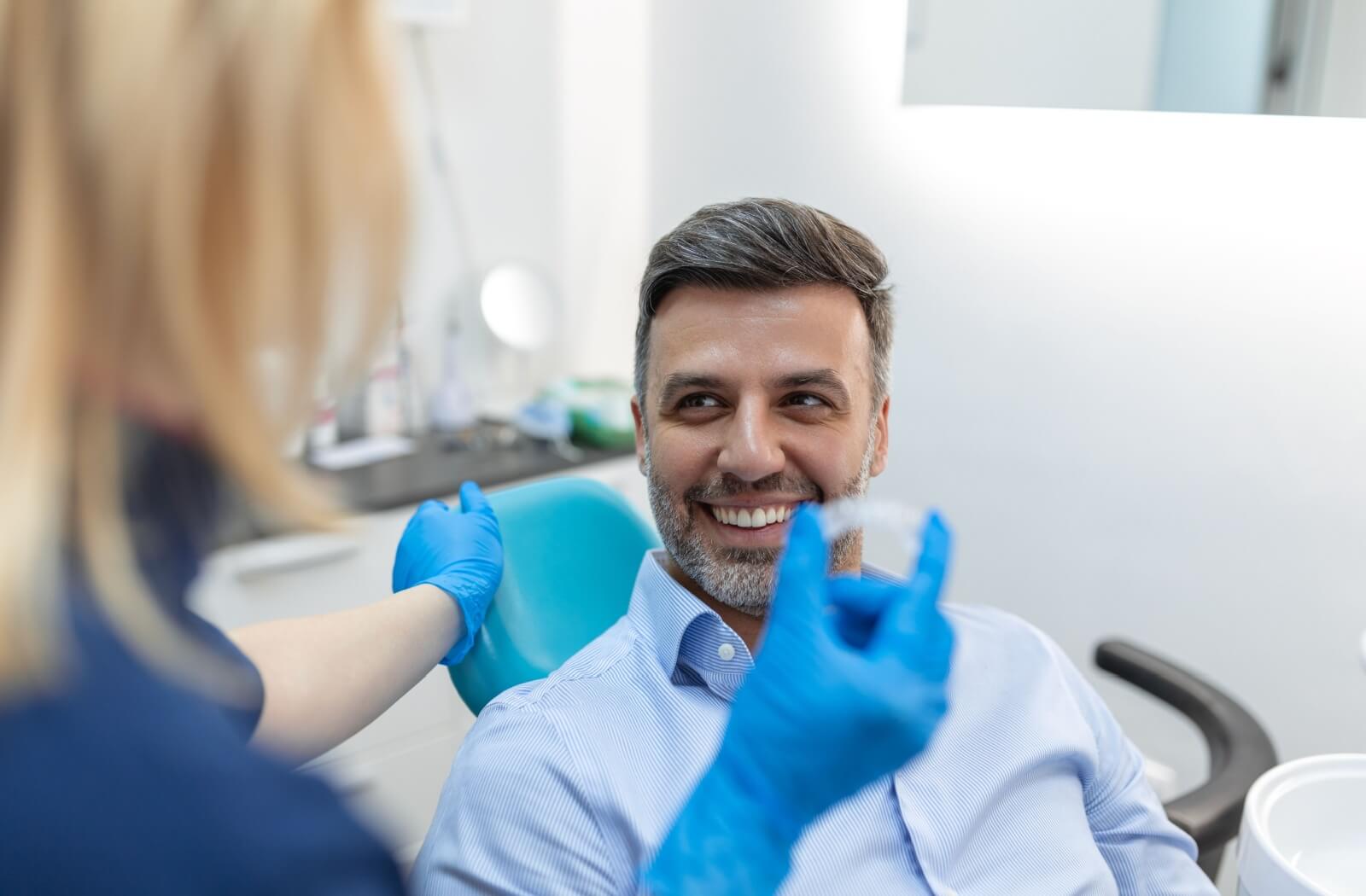Invisalign vs. Braces: Which Is Faster?

Invisalign vs. Braces: Which Is Faster?
Are you contemplating orthodontic treatment to correct a gap in your teeth, align some crooked teeth, or fix an overbite? If so, you might be wondering if it would be faster to use Invisalign or traditional braces. The honest answer– Invisalign generally works faster for simple treatments, while braces might be faster for complex cases.
At McKenzie Towne Family Dental, we offer both treatment offers, don’t hesitate to book an appointment to learn more about which one might be better for your smile.
What is Invisalign?
Invisalign is a treatment option which involves using a series of clear, removable liners to shift your teeth back into their proper place. Aligners are made to custom-fit your teeth, and should be worn for 20-22 hours each day. As treatment progresses, the aligners will be changed every 1-2 weeks, or as your doctor recommends. With Invisalign, you could see your new smile in as little as 6 months.
What are Braces?
Traditional braces typically consist of metal brackets, wires, and sometimes rubber bands. They are attached to the teeth and apply pressure over time to gradually fix alignment. Unlike Invisalign, braces require regular adjustment from your orthodontist. On average, you might see results from braces in 6 to 18 months.
Is Invisalign or Braces Faster?
In most cases, Invisalign is the faster course of treatment with results being achieved in as little as 6 months. However, there are several factors that may influence the speed of treatment as every case and patient is different. Here are a few factors to consider:
Complexity of Alignment
Minor problems like a small gap or misalignment of the teeth can typically be addressed more quickly with the use of Invisaligns. Therefore, it might be the quicker option for seeing your new smile. However, larger and more complex issues are usually treated better through traditional braces, making them the faster treatment option.
Compliance to Doctor’s Orders
Invisalign asks that patients are wearing the aligners for an estimated 20-22 hours per day. If you find yourself not wearing your aligners for prolonged periods of time, it may impact the time it takes to see results. Whereas, braces are permanently attracted to your teeth without the ability to be removed.
Frequency of Adjustments
Braces are adjusted in-person through an appointment with your orthodontist every 4-

Is Speed All That Matters?
The time it takes to see results shouldn’t be the only factor considered when deciding on a treatment option. In fact, there are many other considerations to be made, including:
- Appearance: For a more discreet option, you might choose Invisalign as they are clear and less noticeable than traditional braces.
- Comfort: Both options apply pressure to the teeth, which can cause discomfort. However, the smooth plastics of Invisalign are often considered the more comfortable choice.
- Cost: The cost of Invisalign and braces varies based on the location and provider, but oftentimes they are similar in price. Check with your dental clinic if they offer interest-free payment plans that can work with your insurance coverage.
- Maintenance: Unlike braces, Invisalign can be removed for eating and drinking, which makes it easier to clean and keep clean.
Who is a Better Candidate for Invisalign vs. Braces
When deciding between Invisalign and braces, it can be wise to consider your unique needs and lifestyle. While both options can be effective for aligning teeth, certain factors may make one more suitable than the other.
Age & Lifestyle
Invisalign is popular for adults and teenagers who prefer a more discreet treatment. The clear aligners are virtually invisible, making them ideal for those who feel self-conscious about wearing braces in professional or social settings. Additionally, Invisalign aligners can be removed for eating, brushing, and special occasions, providing more flexibility.
Braces may be a better option for younger patients or individuals who need significant corrections. Because braces are fixed to the teeth, there's no risk of losing or forgetting to wear them, which is particularly helpful for children or teens who might struggle with compliance.
Types of Orthodontic Issues
Invisalign typically performs better for mild to moderate alignment issues such as minor gaps, overcrowding, or slight overbites. Traditional braces are often the preferred choice if your dental problems are more significant—such as malocclusions, rotated teeth, or jaw alignment issues. Braces provide the ability to apply more complex adjustments using wires, brackets, and rubber bands.
Ultimately, the best treatment option is the one best suited to your teeth’s specific needs. Consulting with an experienced professional can help you to determine whether Invisalign or braces are the right choice.
Book an Appointment Today
At McKenzie Towne Family Dental, we’re dedicated to helping you achieve a smile you’re proud of. Whether you’re considering Invisalign for its discreet and flexible treatment or braces for its ability to address more complex orthodontic issues, our experienced team is here to guide you through every step.